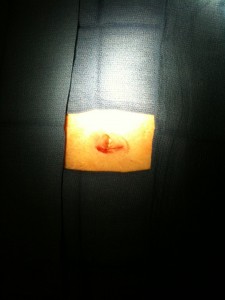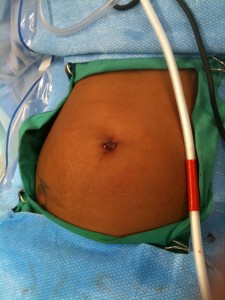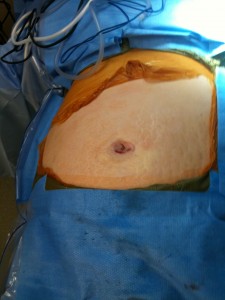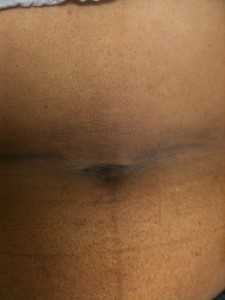What is Single Incision (SILS) surgery?
At Johns Creek Surgery, PC, almost 100% of our bariatric procedures are done laparoscopically using single incision surgery (SILS). This involves making a single incision instead of multiple incisions or large incisions. The incision utilized in laparoscopic surgery is generally 5-12 mm in size,1/2,″ and just at or above the belly-button.
All instruments are inserted through this single incision resulting in minimal scaring. After the procedure, the incision is stitched closed and bandages are placed over them. A small incision may not require stitches, just small strips of sterile tape. Most people won’t even know you had surgery.
Please note that surgery alone is not a solution to losing weight. It can train you to eat less, but you still have to do much of the work. To lose weight and avoid complications from the procedure, you will need to follow the recommended exercise and eating guidelines provided by your doctor and dietitian. Although originally designed to concentrate on weight-loss issues, SILS is really a rapidly evolving technique that’s also being put on other areas of healthcare. Some surgeons are successfully using this procedure for urological, gynaecological, kidney, and colon surgeries.
Not everyone is a candidate for single-incision surgery. This procedure is most commonly done for gallbladder surgery, although it can be done for other procedures. We can discuss whether you are a candidate at your initial consultation.
Here are some examples of the results of some of our patients:




Key Benefits of SILS
- Fewer incisions: Typically, this surgery requires only one small incision.
- Health and cosmetic benefits: Since there are fewer incisions, there is less possibility of infection, less scarring and better cosmetic results.
- Faster recovery times: The surgery is recognized as minimally invasive to cause shorter recovery times.
- The most recent technology: Laparoscopic surgery has generally replaced the need for traditional open surgeries in the abdominal or pelvic cavities.
About the Procedure
Prior to the procedure, you will receive general anesthesia and will be asleep and unable to feel pain. During surgery, a small surgical cut will be made in the abdomen and a tiny camera called a laparoscope will be inserted to allow Dr. William H. Johnson, or Dr. Christopher J. Hart to see inside your belly. The recommended procedure will be performed within 30 to 60 minutes. Patients generally go home the same day of surgery and begin their normal activities within 1 or 2 days. Most people take 1 week off work to fully recuperate. Patients stay on liquids or mashed food for 2 or 3 weeks after surgery and slowly add soft food, then regular food to their diet. Six weeks after surgery, most patients can eat regular food.
Additional Weight-Loss Procedures
Many of our surgical patients come to Johns Creek Surgery in Suwanee, GA from areas all around north Georgia and beyond including Atlanta, Macon, Sandy Springs, Alpharetta, Milton, Roswell, Duluth and Marietta, GA. Our board certified surgeons perform a wide variety of general and specialty surgical procedures including bariatric surgery.
